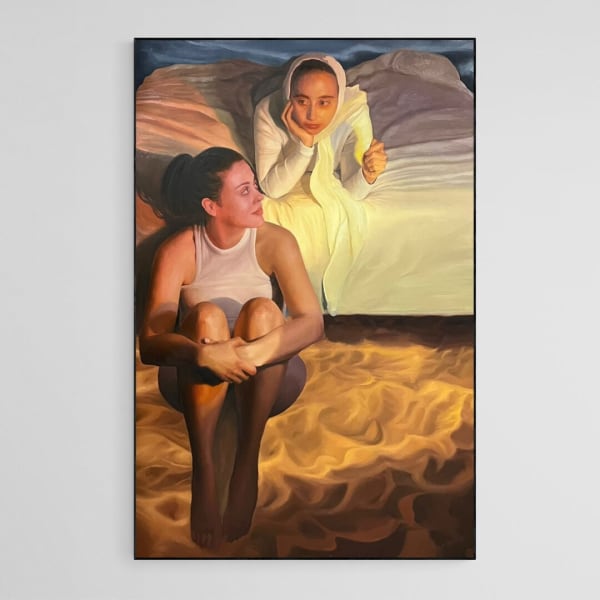Tayseer Barakat PALESTINIAN, b. 1959
Tayseer Barakat (b. 1959, Gaza) is a distinguished Palestinian artist known for his evocative works that fuse traditional and contemporary styles. His innovative use of materials, like wood and fire, and his poignant installations, such as "Prisoners’ Letters," highlight the Palestinian experience. Barakat's art reflects themes of identity, loss, and delves into the human condition, often reflecting on the Palestinian experience and broader themes of flight, freedom, and resilience. His works are deeply personal yet universally resonant, offering insights into the struggles and triumphs of his people. The establishment of 'The New Vision movement' during the first intifada saw Barakat and his contemporaries reassess the role of art in resistance, emphasizing the use of local materials and themes.
In forming New Visions, artists Sliman Mansour, Vera Tamari, Nabil Anani and Tayseer Barakat sought to address a more avant-garde outlook on how art can serve the national struggle, without compromising each artist’s expressive style. Its a movement that resisted the occupation at the time of the first Intifada by boycotting Israeli products and using only natural materials, such as straw, mud, and plant-based dyes.
-

Q0DE at Art Cairo 2024
2 - 6 Feb 2024Q0DE is taking part for the third time at Art CairoRead more -

The Necessity of Unheard Voices
5 - 20 Dec 2023Art has a place, plays a role, and is an incredible medium in providing a voice for those who cannot speak—creating a louder noise for people to see and bringing...Read more






